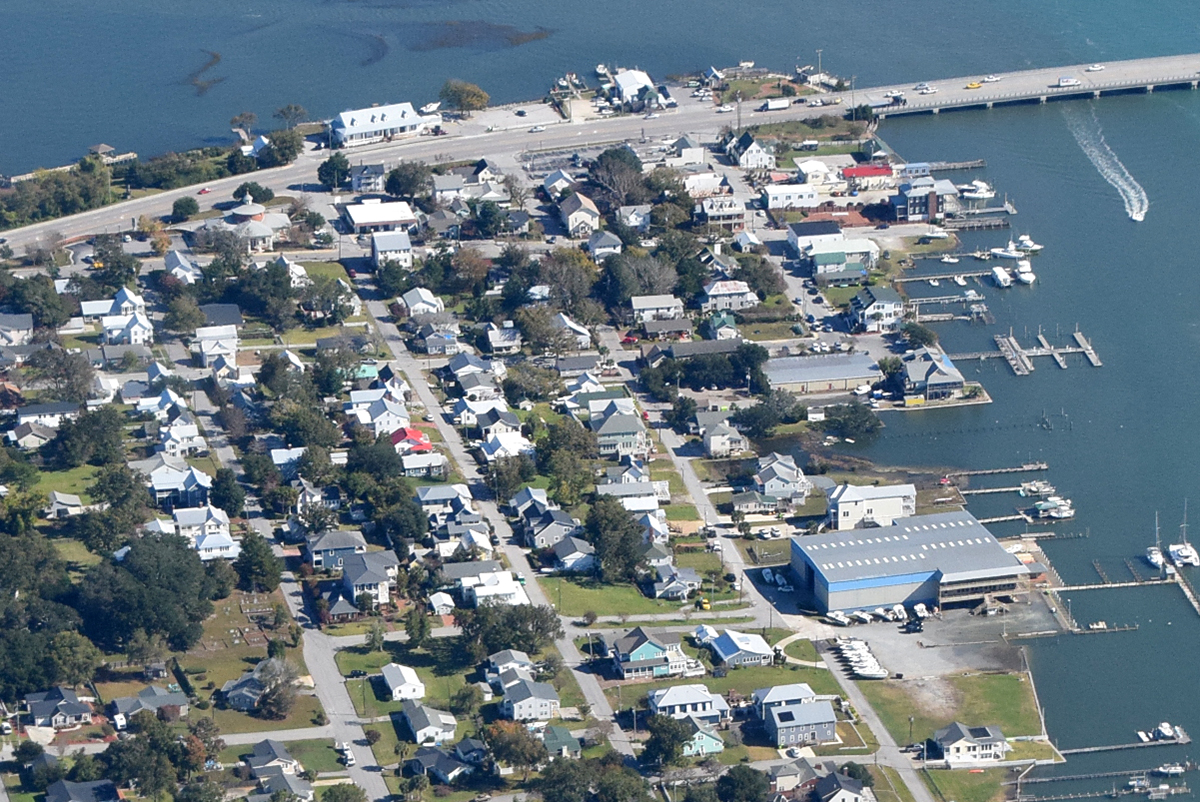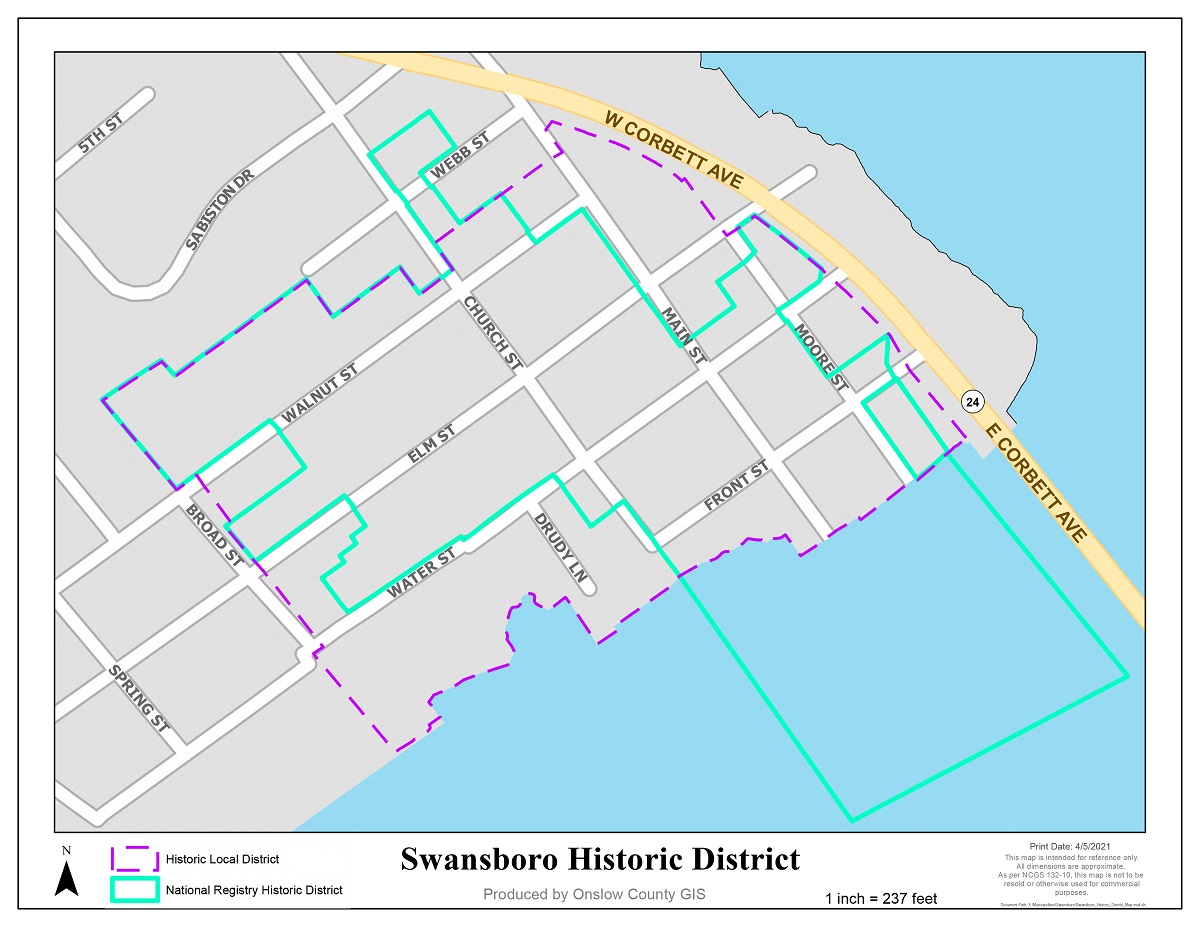
Nearly 300 years ago, settlers made their way to what is now Swansboro, a quiet little town where the White Oak River meets the Intracoastal Waterway in Onslow County.
Before the settlers, there was a village of Native Americans in the Algonkian tribe driven from the area after they joined the Tuscaroras in a 1711 attack on New Bern. The town, founded in 1730 where the village once stood, was incorporated in 1783 and named Swannsborough after Samuel Swann, who had been speaker of the North Carolina House of Commons, according to information on the town government website.
Supporter Spotlight
Early in the town’s history, livelihoods depended on shipbuilding, then lumber and naval stores, and, in the mid-20th century, on the commercial fishing industry. The “Friendly City by the Sea” has a population of about 3,744, according to the 2020 Census, and draws visitors to its downtown for festivals, shopping, dining and to see the historic homes and businesses, many of which were built in the late 1800s and early 1900s. Some date back centuries.
The town and the Swansboro Historic Preservation Commission have been awarded a 2021 federal Historic Preservation Fund grant to update its more than 30-year-old architectural survey that details these homes and other historic structures in the 32-acre downtown area, about 1/20th of a square mile,, the state announced Thursday.
Swansboro Planner Jennifer H. Ansell told Coastal Review that this new survey will replace the previous 32-year-old survey conducted as a part of the town’s National Register of Historic Places nomination to create the district. The register recognizes 123 properties in Swansboro’s district. Of those, 77 are considered contributing properties, which add to the historical character or meets National Register criteria within a National Historic Landmark district. The town worked with Onslow County to create an online interactive map of the district.
“Many properties have been demolished, moved, or otherwise significantly modified since the original survey, so this new survey will provide an updated inventory of the properties within the Historic District,” Ansell said.
Elizabeth King, architectural survey coordinator for the North Carolina State Historic Preservation Office, told Coastal Review that the total project budget is $15,000 with $6,000 coming from the town and $9,000 through the Certified Local Government grant, awarded by the National Park Service and administered through the State Historic Preservation Office of the North Carolina Office of Archives and History. The Certified Local Government Program encourages state and local governments to work with federal partners to promote nationwide preservation initiatives and commit to national historic preservation standards, according to the National Park Service.
Supporter Spotlight
King said that an architectural survey provides a baseline of data about the significance, integrity and condition of historic buildings and landscapes and orients individual buildings within their historic context.
“It is the basis for evaluating eligibility for the National Register of Historic Places, certificate of appropriateness review, and many other types of preservation planning. It can contribute to heritage tourism and economic development,” she said.
The town hired Richard Grubb & Associates, a Wake Forest-based cultural resources consulting firm, to manage the project. Preliminary fieldwork is expected to begin this month and the project is anticipated to be finished no later than September, officials said.
For the survey, fieldworkers will document buildings and landscapes 50 years old and older by taking photographs, drawing site plans and collecting oral history from those they meet on-site. The fieldworkers will do some archival research to determine any patterns of historical development. The Swansboro Architectural Survey Update is to be wrapped up in a final report summarizing the results once complete, according to the state.
The survey is to be within the boundaries of both the National Register-listed Swansboro Historic District, registered in 1990 and one of 540 historic districts on the National Register, and the locally designated Swansboro Historic District, which the town determines. While these two districts overlap, the boundaries do not.

Ansell explained that the town’s two districts can cause confusion.
“The boundaries of the two do not totally coincide with one another, which is confusing to citizens and presents a challenge for enforcement of the local ordinance and in educating citizens on the opportunities available to them,” she said, citing tax credits for example. Owners and developers could receive 20% federal income tax credit and a 15 to 25% state income tax credit for certified rehabilitations of income-producing historic structures on the National Register of Historic Places, either individually or as a contributing building in a National Register Historic District, according to the state.
“This survey will enable us to decide if the boundaries should be merged, and if properties should be added or removed,” Ansell said, adding, “Hopefully it will aid in streamlining the process because we will have updated property information and possibly clearer boundaries.”
The survey can be used to educate the public on the town’s historic resources, and provide updated information for stakeholders such as owners, businesses, visitors, realtors, attorneys, as well, Ansell added.
King said that the town qualified for the grant because it is a Certified Local Government, making Swansboro eligible to apply for matching grants for certain types of historic preservation projects.
The town submitted an application to resurvey the National Register and local historic districts last year, and “we agreed to contribute funds provided by the National Park Service and administered by our office, the State Historic Preservation Office,” King said.
Public access to the information will be available through HPOWEB, the Historic Preservation Office’s geographic information system, accessible online.
The survey material will be considered in the environmental review necessary for state and federal projects. The survey can also be used to help plan future economic and community development projects, official said.
For more information on the survey contact King at elizabeth.king@ncdcr.gov or 919-814-6580, or Ellen Turco of Richard Grubb & Associates, principal investigator, at eturco@rgaincorporated.com.







